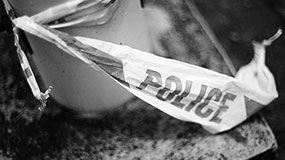
 “Forensic science” refers to the application of science to a legal context or situation. A forensic scientist is, first and foremost, a scientist, whose education and experience enables him/her to analyze and interpret evidence which could result in the acquittal or conviction of a person of a serious crime. Therefore, the scientist’s expertise must be at a very high level, both to ensure fairness to the accused and to be able to withstand cross-examination in court.
“Forensic science” refers to the application of science to a legal context or situation. A forensic scientist is, first and foremost, a scientist, whose education and experience enables him/her to analyze and interpret evidence which could result in the acquittal or conviction of a person of a serious crime. Therefore, the scientist’s expertise must be at a very high level, both to ensure fairness to the accused and to be able to withstand cross-examination in court.
Most people are familiar with a sampling of forensic science activities because of television shows such as CSI, (Crime Scene Investigation). These shows portray the gathering of evidence at a crime scene by specialized Identification police officers and forensic units, analysis of this evidence by forensic biologists and technicians who may do DNA profiling or forensic chemists who may analyze crime scene debris. Firearms and tool mark examiners, often referred to as ballistic experts, examine and compare markings made on bullets and cartridge cases when fired. People are also familiar with the work of the forensic pathologist in conducting autopsies to determine the cause, time and manner of death, and the work of criminal or behavioral profilers who analyze and interpret an offender’s behaviour, and his likely characteristics, as suggested by the crime and/or crime scene.
However, the areas in which forensic scientists are involved today are broader and more complex than what we see on television. To name a few, there are forensic document examiners who examine the validity of signatures or are involved in the analysis of counterfeit passports, money, credit cards, or identity theft. Forensic accountants play a role in many different types of investigations including identifying tax evasion, life insurance fraud and money laundering schemes. Forensic anthropologists and forensic odontologists help identify victims based on their bones and dentation even when the remains are badly damaged or decomposed. Enamel is one of the hardest substances in the human body and can even survive cremation. Forensic Entomologists use their insect expertise to help determine cause and time of death. Forensic botanists apply plant science and genetics to legal cases. Cannabis samples for example, can be identified and traced by genetic analysis. Forensic nurses work in sexual assault cases as nurse examiners or in child abuse and domestic violence cases. Forensic engineers may be involved in situations where an investigation may lead to litigation such as the collapse of a structure like a bridge or a building or the malfunctioning of equipment or machinery causing death or injury. Wildlife forensic scientists are involved in the identification of illegally harvested animals and according to the World Wildlife Fund, the trade in illegal animal parts worldwide is second in profits only to drug dealing.
There are as many areas of forensic science as there are various scientific specialties. As new technologies develop, resulting in new forms of crime (e.g. computers), new areas of forensic science will also develop to solve these crimes, protect the innocent and convict the guilty.
